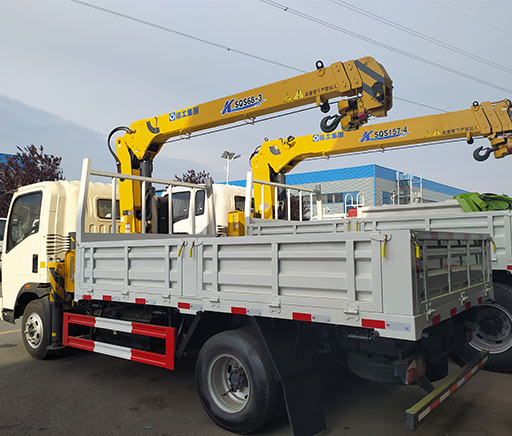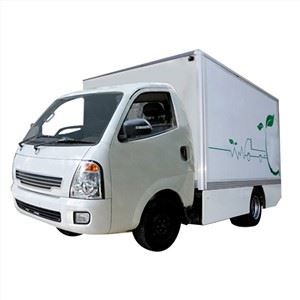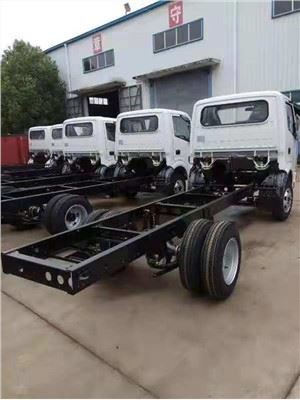Essential Guide to Gasoline Tanker Parts: Understanding Their Importance and Maintenance
Gasoline tankers are vital components of the fuel distribution chain, transporting gasoline from refineries to gas stations and other end-users. Understanding the parts that make up these tankers is crucial for ensuring safe and efficient operation. This comprehensive guide will explore various gasoline tanker parts, their functions, maintenance tips, and more.
Introduction to Gasoline Tankers
Gasoline tankers are large vehicles designed to carry gasoline and other petroleum products. These tankers are equipped with advanced technology and features to ensure safety and compliance with regulations. With thousands of miles traveled every day, knowing how the parts work together is essential for fleet managers, operators, and maintenance teams.
1. Overview of Gasoline Tanker Structure

Gasoline tankers consist of several primary structures that hold fuel and support the vehicle’s operation. Understanding these parts is fundamental for anyone involved in fuel transportation.
1.1 The Tank
The tank is the main component of a gasoline tanker and is typically made from high-strength steel or aluminum. It is designed to store and transport gasoline safely.
Materials Used
- Steel: Known for durability and strength.
- Aluminum: Lightweight, reduces fuel consumption.
Tank Shapes
Gasoline tanks may come in various shapes such as:
- Cylindrical
- Rectangular
2. Tanker Components: Key Parts and Their Functions
Each component of a gasoline tanker plays a significant role in ensuring safety and efficiency.
2.1 Manhole and Covers
Manholes are openings on the tank for loading and unloading fuel. Proper sealing is essential to prevent leaks.
2.2 Product Pumps
Product pumps transfer gasoline from the tank to the delivery system. They are usually centrifugal or positive displacement pumps.
2.3 Valves
Valves control the flow of gasoline. Common types include:
- Check valves: Prevent reverse flow.
- Shut-off valves: Stop flow during emergencies.
2.4 Hoses and Fittings
Flexible hoses connect the pump to the tank or delivery system. Proper fitting prevents fuel leaks.
3. Safety Features of Gasoline Tankers
Gasoline tankers incorporate various safety features to minimize risks associated with transporting flammable liquids.
3.1 Anti-Surge Baffles
These are internal structures that reduce fuel slosh, preventing damage and maintaining balance during transit.
3.2 Emergency Vents
These vents allow pressure to escape in an emergency, preventing tank rupture or explosion.
3.3 Grounding Systems
Grounding systems prevent static electricity build-up, essential when loading and unloading gasoline.
4. Maintenance of Gasoline Tanker Parts
Regular maintenance ensures the longevity and safety of gasoline tanker parts.
4.1 Regular Inspections

Conduct inspections of the tank, valves, and hoses. Look for signs of wear and tear.
4.2 Cleaning the Tank
Regular cleaning prevents residue build-up, which can contaminate fuel. Use specialized cleaning solutions.
4.3 Lubricating Moving Parts
Lubricate pumps and valves to ensure smooth operation and prevent corrosion.
5. Common Issues and Solutions
Identifying common problems can help address issues before they escalate.
5.1 Fuel Leaks
Inspect hoses and valves for leaks. Replace damaged components immediately.
5.2 Pump Failures
Regular testing and maintenance can prevent pump failures. Always keep spare parts available.
5.3 Unusual Noises
If pumps or valves make unusual noises, it may indicate wear. Inspect and replace as needed.
6. Regulatory Compliance for Gasoline Tankers
Understanding regulations is essential for any operator in the fuel distribution industry. Compliance ensures safety and legal operation.
6.1 Hazardous Material Regulations
Operators must adhere to local and federal hazardous material regulations, ensuring safe transportation and handling of gasoline.
6.2 Inspections and Certifications
Periodical inspections and certifications are often required. Maintain necessary documentation and comply with inspections.
7. Tips for Efficient Fuel Delivery
Efficiency in fuel delivery not only saves time but can also reduce costs.
7.1 Route Planning
Use GPS and route optimization software to plan the most efficient delivery routes.
7.2 Monitoring Tank Levels
Use tank level monitoring technology to manage inventory effectively and prevent overflows.
7.3 Training Drivers
Proper training for drivers on safety protocols and tanker handling is crucial. Regular safety drills can reduce accidents.
8. Advances in Gasoline Tanker Technology
The gasoline transportation industry continually evolves with new technologies to enhance safety and efficiency.
8.1 Telemetry and Tracking Systems
Implementing telemetry systems allows real-time tracking of fuel levels and tank pressure, enhancing safety.
8.2 Automated Fuel Management Systems
These systems optimize fuel distribution and inventory management, reducing human error.
9. Practical Examples of Gasoline Tanker Parts in Use
Understanding how each part works in various scenarios can provide insight into their importance.
9.1 Loading and Unloading Processes
During loading, the manhole cover is opened, and fuel is pumped into the tank through hoses. Proper sealing and valve controls are critical.

9.2 Emergency Situations
In case of leaks, emergency vents and shut-off valves can prevent accidents. Knowing how to activate these features is vital.
10. Frequently Asked Questions (FAQs)
10.1 What materials are gasoline tanks made from?
Gasoline tanks are typically made from steel or aluminum, each providing unique benefits.
10.2 How often should gasoline tankers be inspected?
Tankers should be inspected regularly, often quarterly, or as required by local regulations.
10.3 What safety features are standard on gasoline tankers?
Common safety features include anti-surge baffles, emergency vents, and grounding systems.
10.4 What are the signs of a fuel leak?
Signs of a fuel leak may include a strong gasoline odor, visible fuel under the tanker, or fluctuations in fuel levels.
10.5 How can I increase the efficiency of fuel delivery?
Efficiency can be improved through route planning, tank level monitoring, and driver training.
10.6 What is the importance of grounding systems in tankers?
Grounding systems prevent static electricity build-up, reducing the risk of ignition when loading or unloading fuel.
